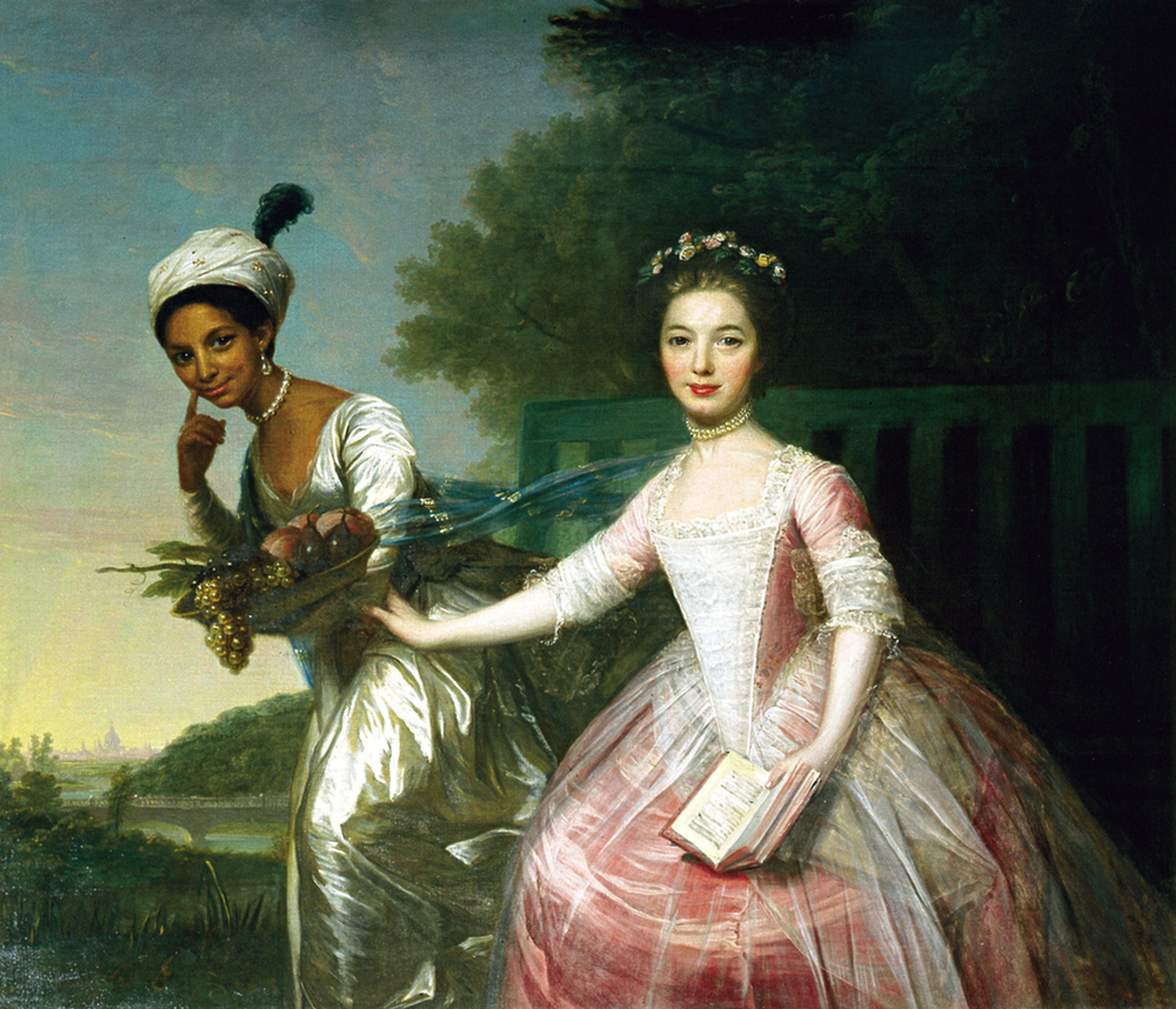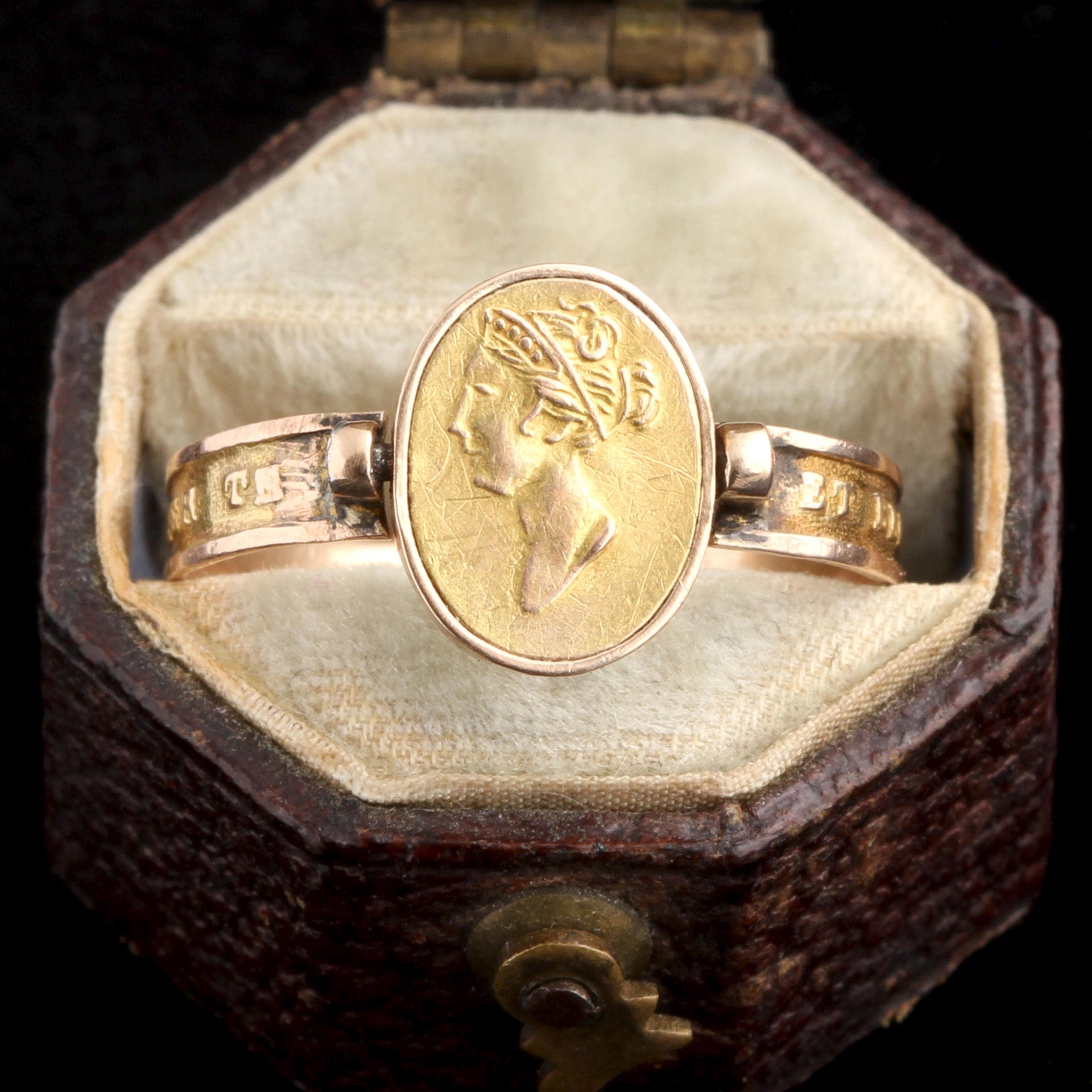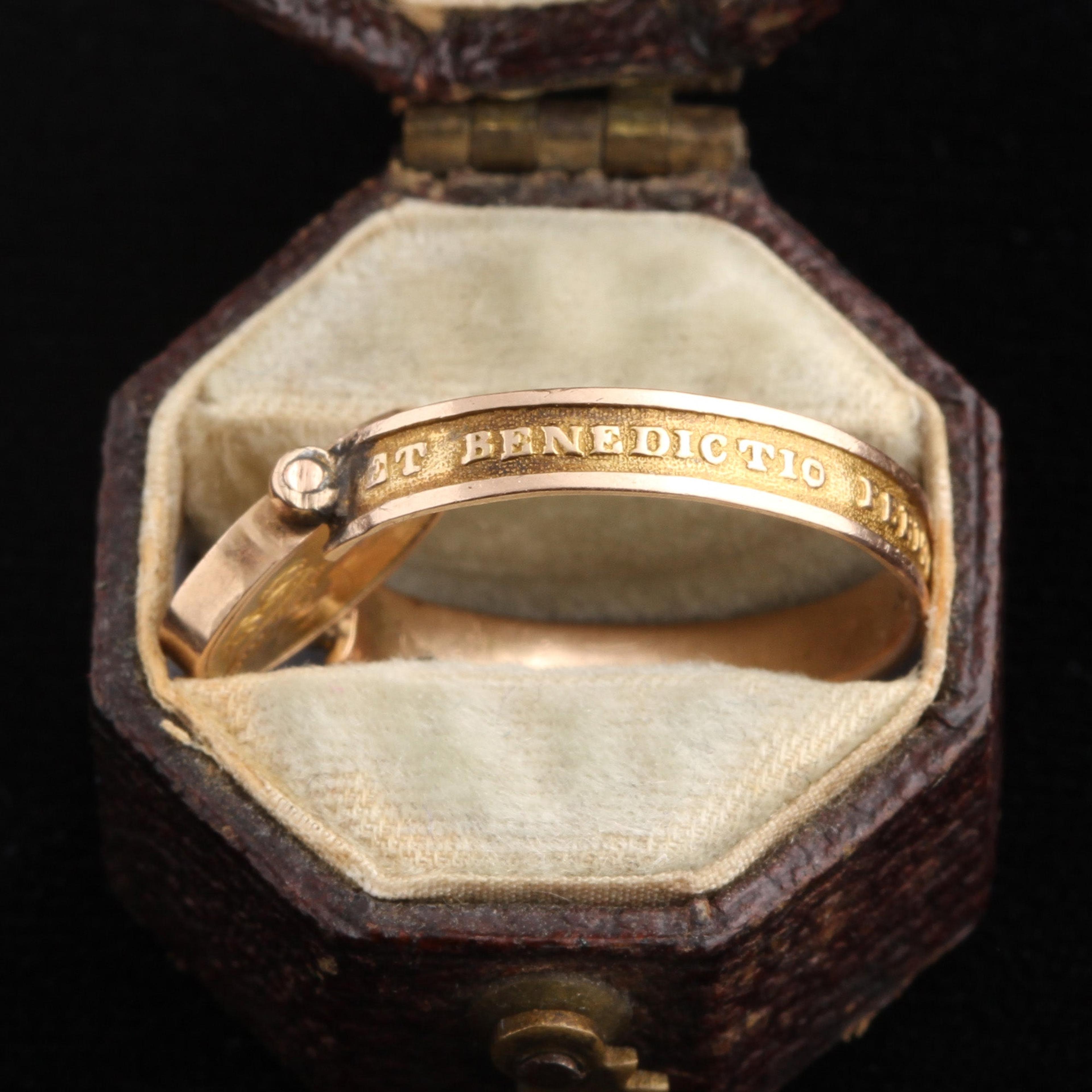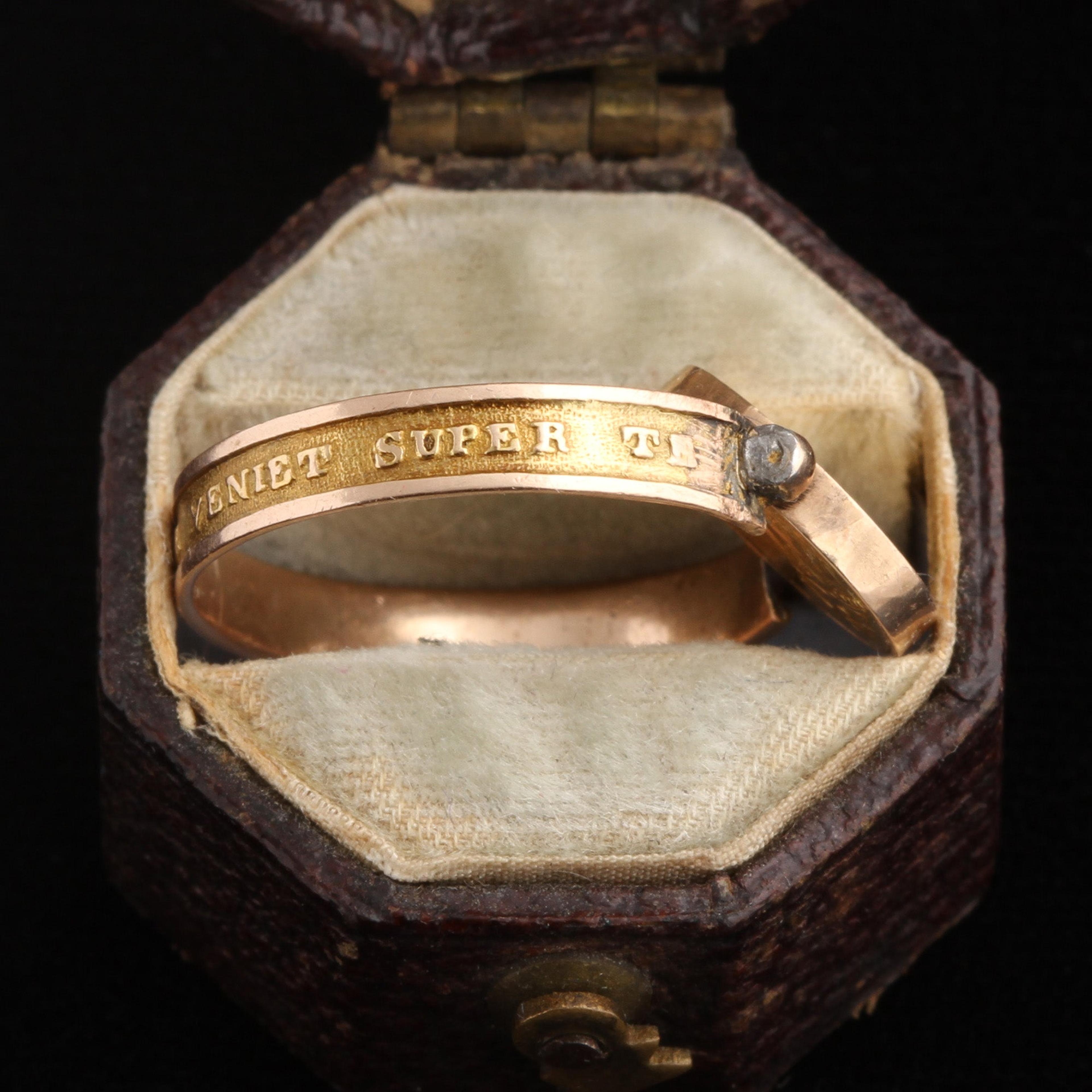This ring celebrates Stephanie de Beauharnais. Born in Versailles during the French Revolution, she was the cousin to Josephine's kids, who became Napoleon's step-kids. Stephanie's "Uncle" Napoleon crowned himself Emperor of the French in 1804 and Stephanie got to live a fabulous life in the Tuileries Palace. Josephine and Napoleon couldn't conceive children of their own, so Napoleon adopted Stephanie and gave her the title of "Princesse Française". This was a power move; he quickly married her off to create a strategic alliance with the Grand Duke of Baden. Regarding the words "Stephanie FV 1814": The FV stands for Filia Verum, or "True Daughter". Apparently, Napoleon had real feelings of affection for Stephanie; adopting her was at least partially out of love. 1814 is the year Napoleon abdicated the throne and went into exile in Elba. The text on the band appears to be based on a passage from the Book of Job which reads "the blessing of him who was about to perish came upon me", but slightly modified to "And the blessing of him who who about to perish came upon YOU". Does this refer to Napoleon's blessing of his adoptive daughter and his supporters' hopes that she would continue his legacy?
thedetails
- Materials
14k gold (tests)
- Age
dated 1814
- Condition
Very good - surface wear commensurate with age and use
- Size
6.25, cannot be resized; 9.9mm head, 3mm shank
Need more photos?
Send us an email to request photos of this piece on a model.

Aboutthe
GeorgianEra
1714 — 1837
As imperialist war raged in the Americas, Caribbean, Australia, and beyond, the jewelry industry benefited: colored gems from all over the empire became newly available. A mix of artistic influences from around Europe contributed to the feminine, glittering jewels of the era. Dense, ornate Baroque motifs from Italy showed up in Georgian jewelry, as did French Rococo’s undulating flora and fauna. Neoclassical style made use of Greek and Roman motifs, which were newly popular due to the recently uncovered ruins of Pompeii and Herculaneum. Lapidary methods improved: the dome-shaped rose cut was popular, as was the “old mine cut,” a very early iteration of today’s round brilliant cut.
The boat-shaped marquise diamond cut was developed around this time, supposedly to imitate the smile of Louis XV’s mistress, the marquise de Pompadour. Paste — an imitation gemstone made from leaded glass — was newly developed in the 18th century, and set into jewelry with the same creativity and care as its more precious counterparts. Real and imitation gems were almost always set in closed-backed settings, lined on the underside with thin sheets of foil to enhance the color of the stone and highlight it's sparkle. This makes Georgian rings tough for modern women to wear, especially on an everyday basis: genteel, jewelry-owning ladies of the 18th century were not famous for working with their hands like we are. Nor did they wash their hands as much as we do. Water will virtually ruin a foiled setting, so take special care with your Georgian ring. Very little jewelry from this period is still in circulation, and it's very difficult to repair.





